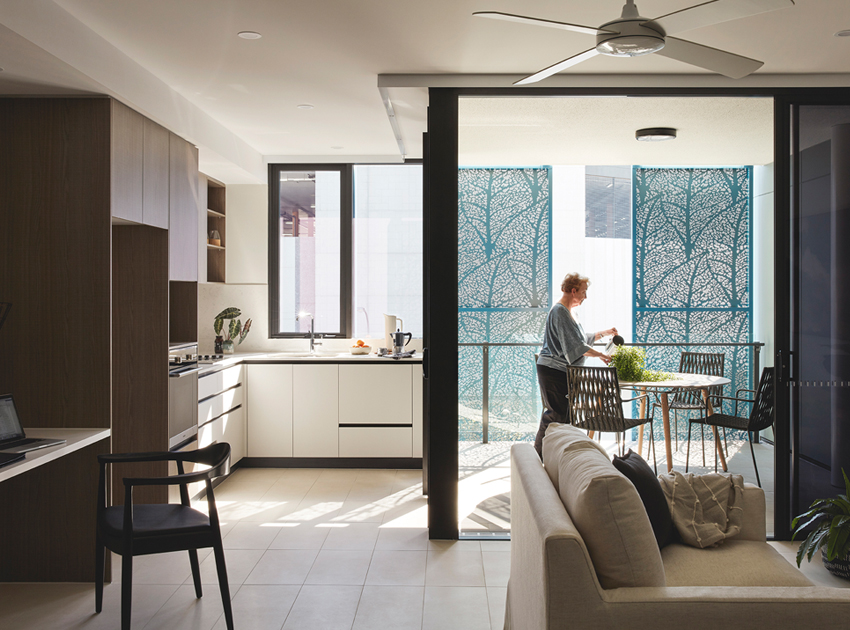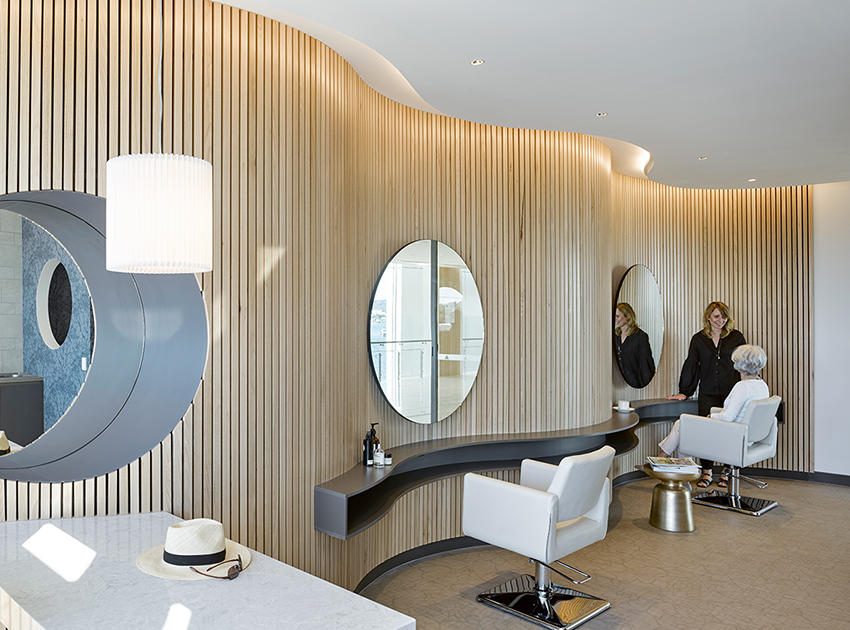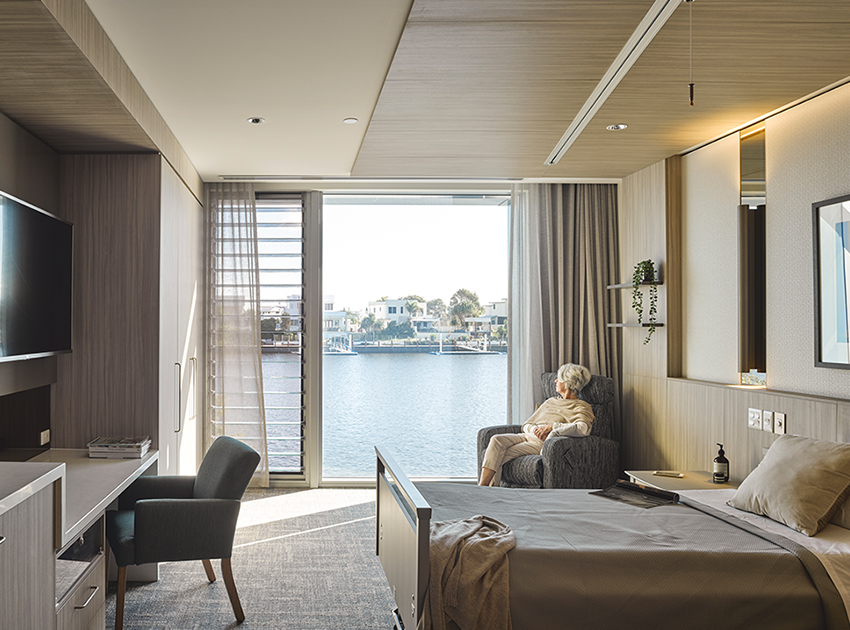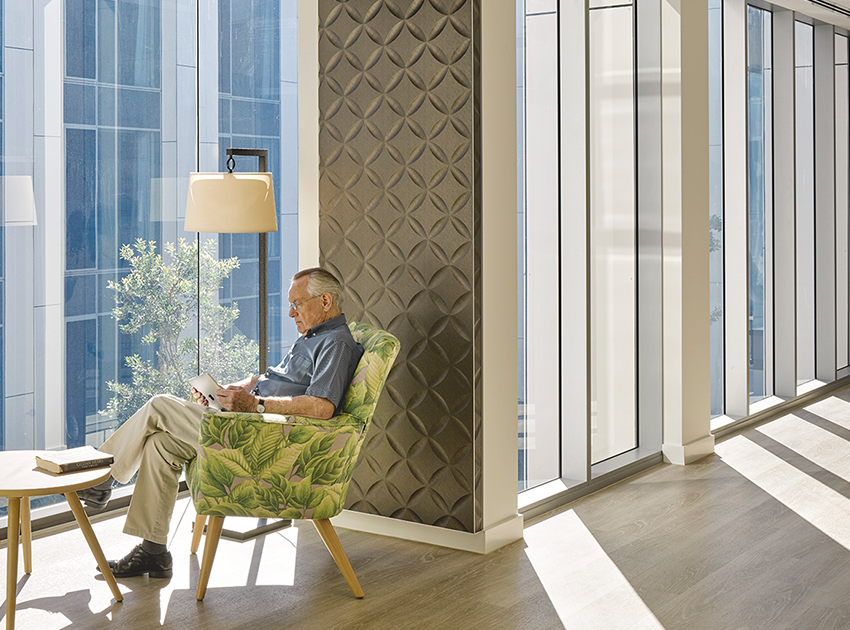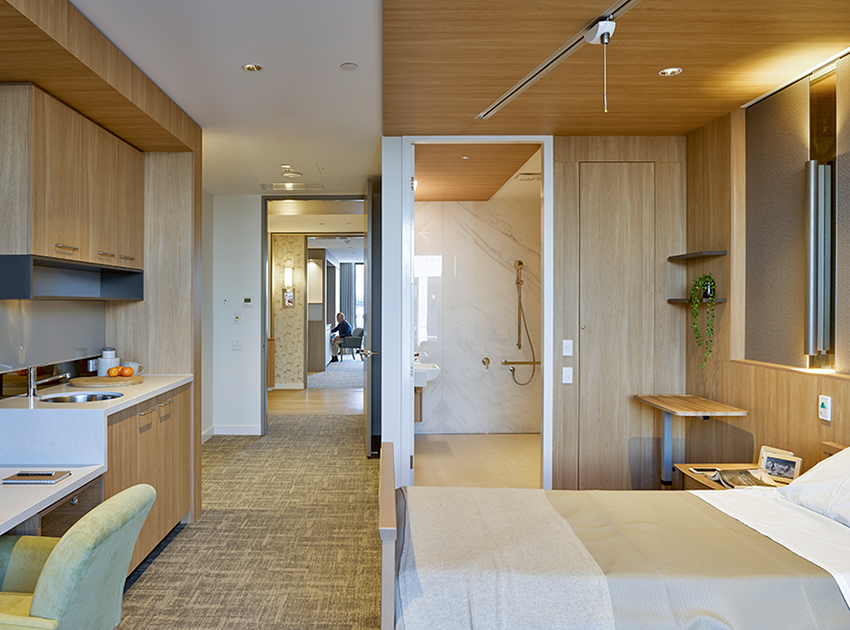‘Dementia presents differently for individuals and across the condition’s trajectory. This means architectural and interior designs must support peoples evolving needs to enhance their quality of life.’
– Magda Myszkowski, Interior Design Manager
Dementia-friendly Design
With an ageing population, dementia is on the rise. Deicke Richards is committed to working with aged care clients to enhance the lived experience of those impacted.
What is dementia?
There are many disorders that affect the brain. Rather than being one specific disease, dementia is an umbrella term for a collection of symptoms. Suffering from dementia involves the progressive loss of mental and physical function, impacting behaviour and the ability to perform everyday tasks.
The Australian Institute of Health & Welfare has found dementia to be the greatest cause of disability in older Australians. Dementia Australia estimates that in 2021 there are 472,000 Australians living with dementia and almost 1.6 million involved in their care. Without a medical breakthrough, the number of those impacted is expected to rise to 590,000 by 2028 and 1,076,000 by 2058.
Retirement living and aged care providers are re-thinking how to connect residential, health and community needs as knowledge, expectations and policy evolves. Diverse and inclusive communities with integrated access to care are the ideal.
Deicke Richards and dementia
Deicke Richards has a keen interest in dementia-friendly design. Our recent learnings include participating in a virtual reality experience of dementia hosted by Churches of Christ and Dementia Australia in 2019, and working with the internationally respected Dementia Village Associates for an aged care master plan review and concept development project last year.
Building on these experiences, our Interior Design Manager Magda Myszkowski completed an ‘Understanding Dementia’ course with UTAS. This provided valuable insights into the types of behaviour people with dementia display – and how environments can positively or negatively impact people living with dementia.
Our commitment to ongoing learning – and close partnerships with our clients, their staff and elders – informs the design of our aged care residences.
Over the past five years, we have completed a broad range of aged care projects with interior design elements informed by dementia-friendly design principles. Below, Magda shares her thoughts on some relevant project images.
